Approaching the base of Fogo Volcano with our local guide | Fogo Island | Cape Verde
Our Max Cousins visited Fogo and Santiago in October 2022 with his friend Stuart. Here’s Max’s account of his first experience of Fogo volcano (you can read about the climb to the summit the following day here: Summiting Fogo Volcano.)
“For me, to visit volcanoes is to approach closer a visceral connection with Earth.
Fogo island in Cape Verde is an active volcano. The island is currently of 25km in diameter and 2,829m in height; from the sea floor the volcano is over 6,000m in height. Nowhere on the island can you forget what this is, layers upon layers of eruption still evolving the landscape today.
We walk into the Caldeira from the north, dropped off at Pai Antonio at 380m. The northern slopes attract clouds that keep this side green. As we ascend into the lush growth, the shade is welcome as we’re starting at midday and today’s a cloudless hot one. Mad dogs and Englishmen…
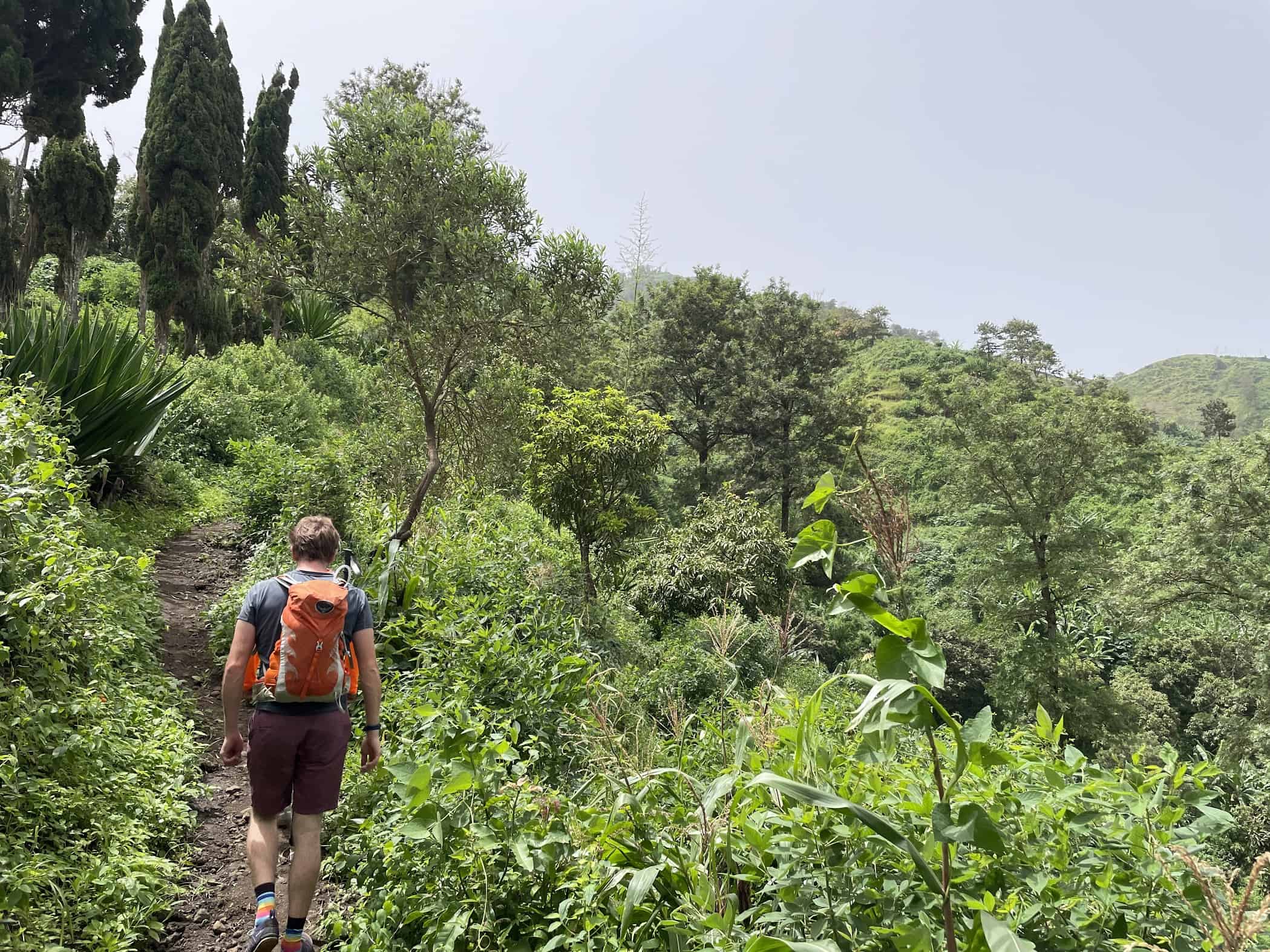
The path is steep and we’re headed for the Caldeira floor at 1,700m. Our guide Mauricio is good company – we rise to cooler climes steadily and without fuss. At 1,350m we pass the President’s House, a hideaway built for a president who never visited. The path changes from a steep foot and donkey track to a steep and cobbled road.
Views to the left open through the canopy and into the haze. Often Cape Verde skies are hazed by windblown Saharan dust which restricts visibility but also creates the amazing beaches, the best known of which are on Sal and Boavista. Through the haze we can see across the consistent gradient of the eastern landslide slope, now itself re-formed by subsequent eruptions.
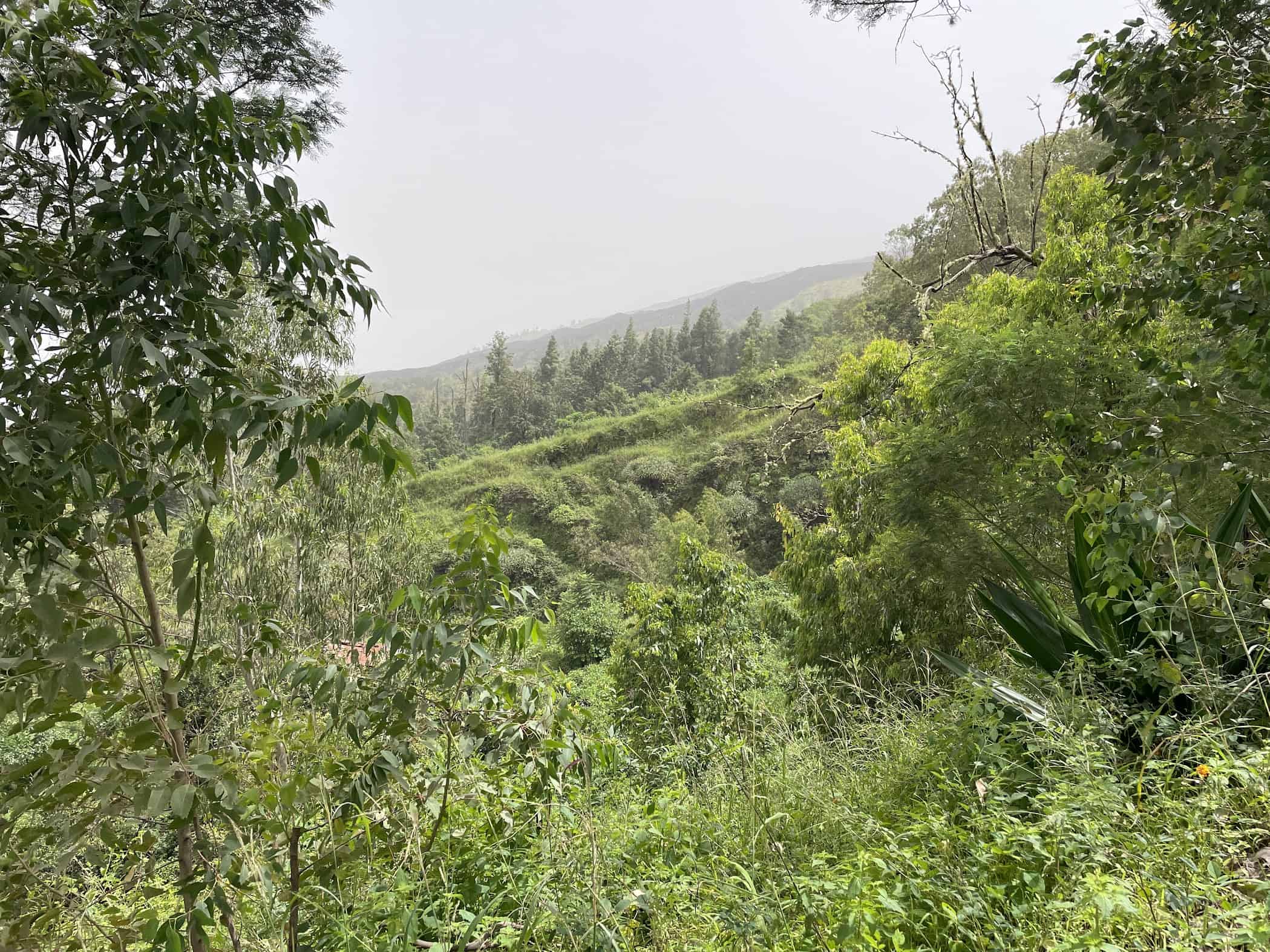
The eastern landslide slope. Once upon a time the profile of the full island was more conical and the summit was much higher than at present. Around 73,000 years ago the summit collapsed catastrophically to the east in a titanic landslide, leaving behind the western curve of the Bordeira wall at some 2,600m. The debris hit the ocean with enough force and volume to create tsunami waves 170m high, pointing straight at neighbouring Santiago island. When the waves reached Santiago they washed up to 500m in height and camper-van sized boulders can be found on Santiago, far from their origin at sea level.
We trek up the cobbled road which soon intersects with another that’s currently under construction to allow a northern route into – and crucially escape out of – the Caldeira. Another reminder if needed that this here volcano is classed as Active. Then, rounding a corner, we see it.
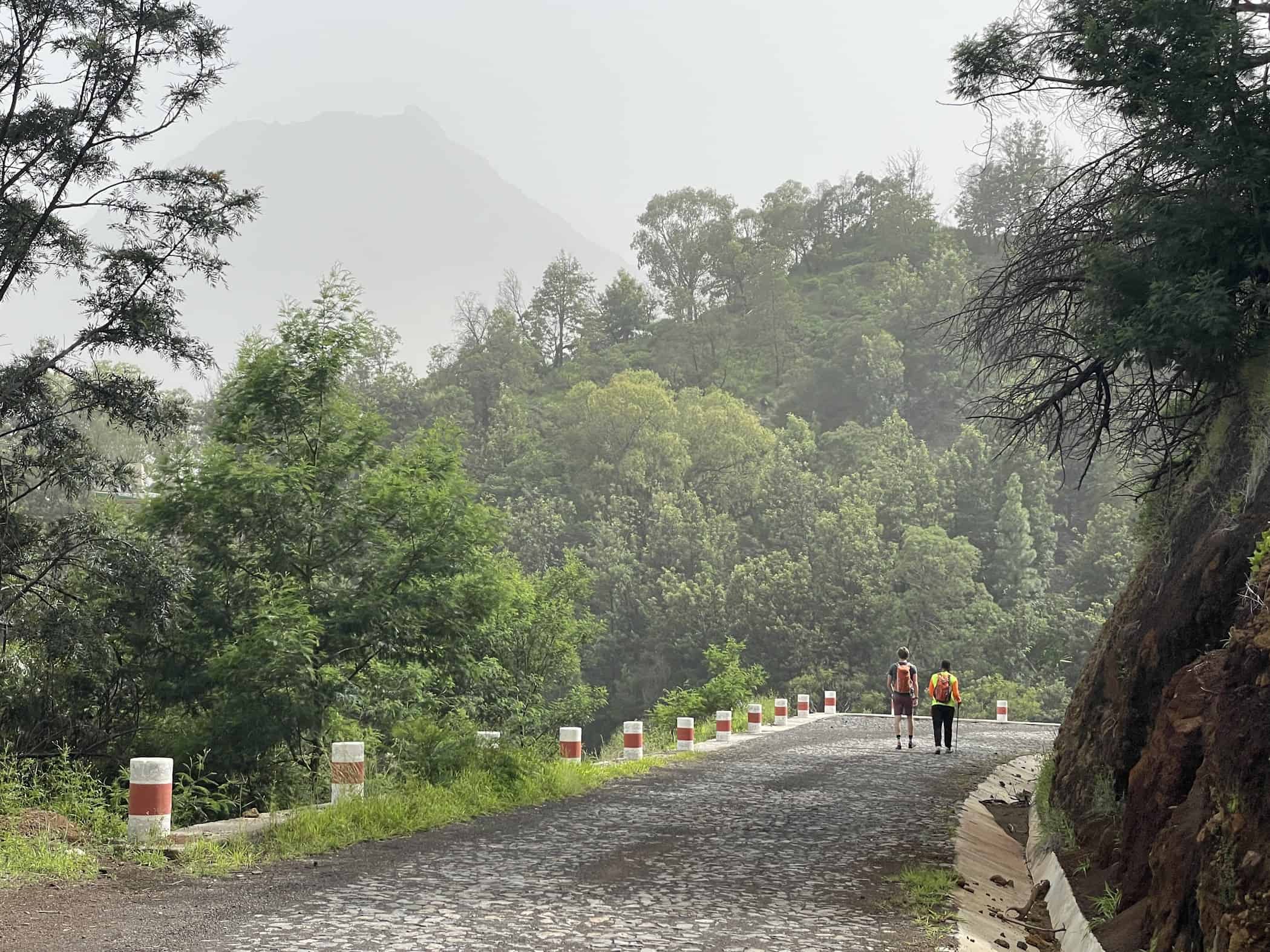
The summit cone comes into view through the trees and haze, rising far above all else. We walk faster now to get closer to the scene as soon as possible. The new road flattens out; the view to the left is unrestricted and the majesty of the Caldeira and its central peak is fully revealed.
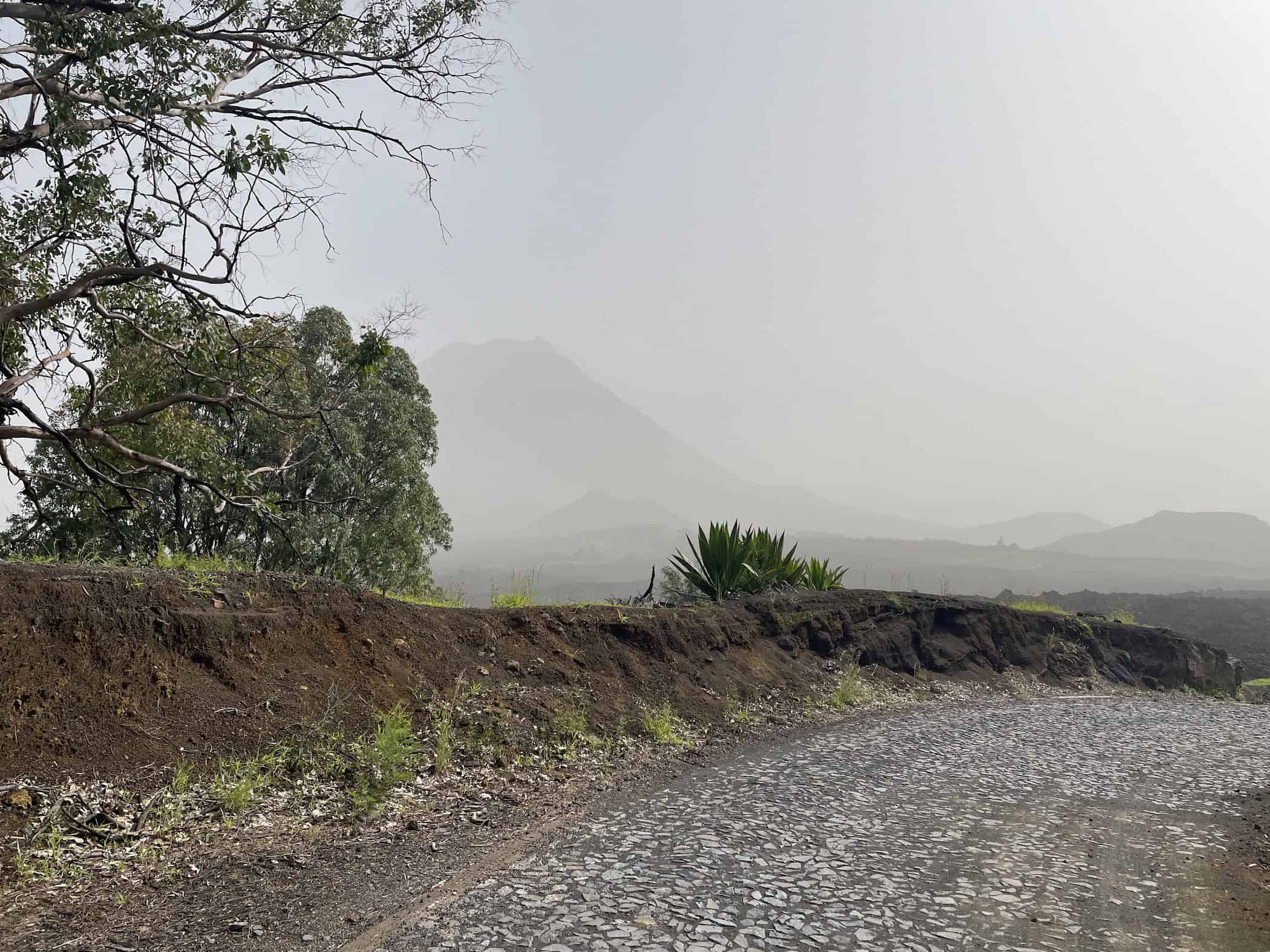
It takes time to process the incoming information. In the foreground and stretching as far as you can see, there’s a rugosity to the landscape that the brain tries to interpret as perhaps soil that’s been freshly ploughed and turned. But no. As more depth and height information clarifies, you realise that this is a field of kilometres and kilometres of bare rock, twisted and shaped by the flow, frozen where it cooled. The haze gives the scene art-like qualities and the gradation of the lava field fades into the distance.
The summit cone, this cathedral of volcanic architecture, is perfectly as you would draw a Pictionary volcano, only it’s over a kilometre in height. The haze picks out closer subsidiary cones, for a volcano this immense has many outlets for its forces.
The mountain is so forthright in its presence that it forces your perception into thinking that it’s the greenery here that is surreal. The mountain demands to be viewed in monochrome – nature though disagrees and everything to the outside of the road is lush, green and growing.
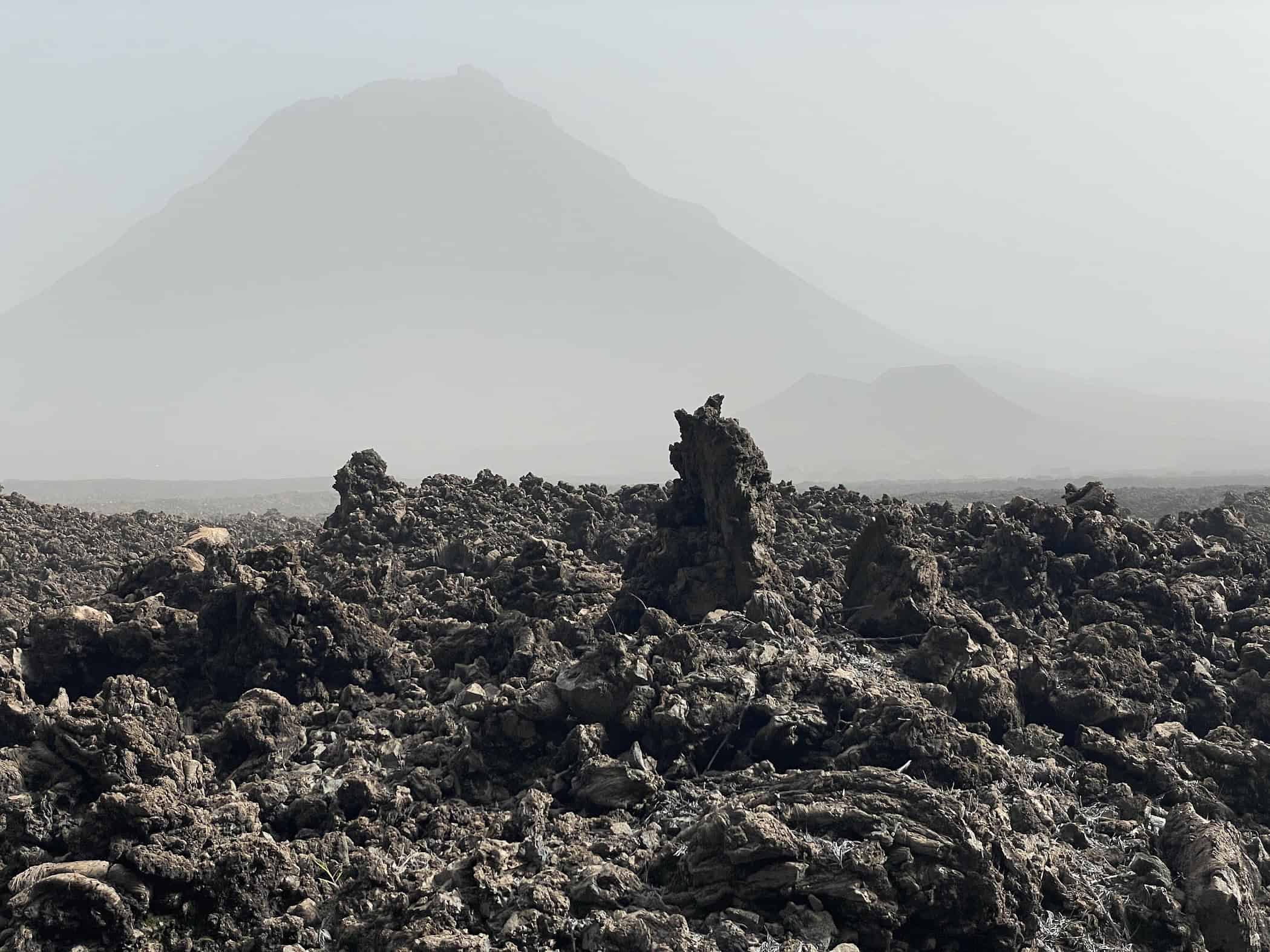
We follow the road as it circles the outside of the Caldeira between lava field and steep Bordeira wall. Movement creates parallax and it’s fascinating to stare at the lava field in passing, its many complex shapes moving past each other. We’re starting to adjust and can pick out changes in colour in the lava, from newer and older eruptions. Flows from newer eruptions are black, changing in colour to the deceptively soil-like brown we saw on cresting the rim.
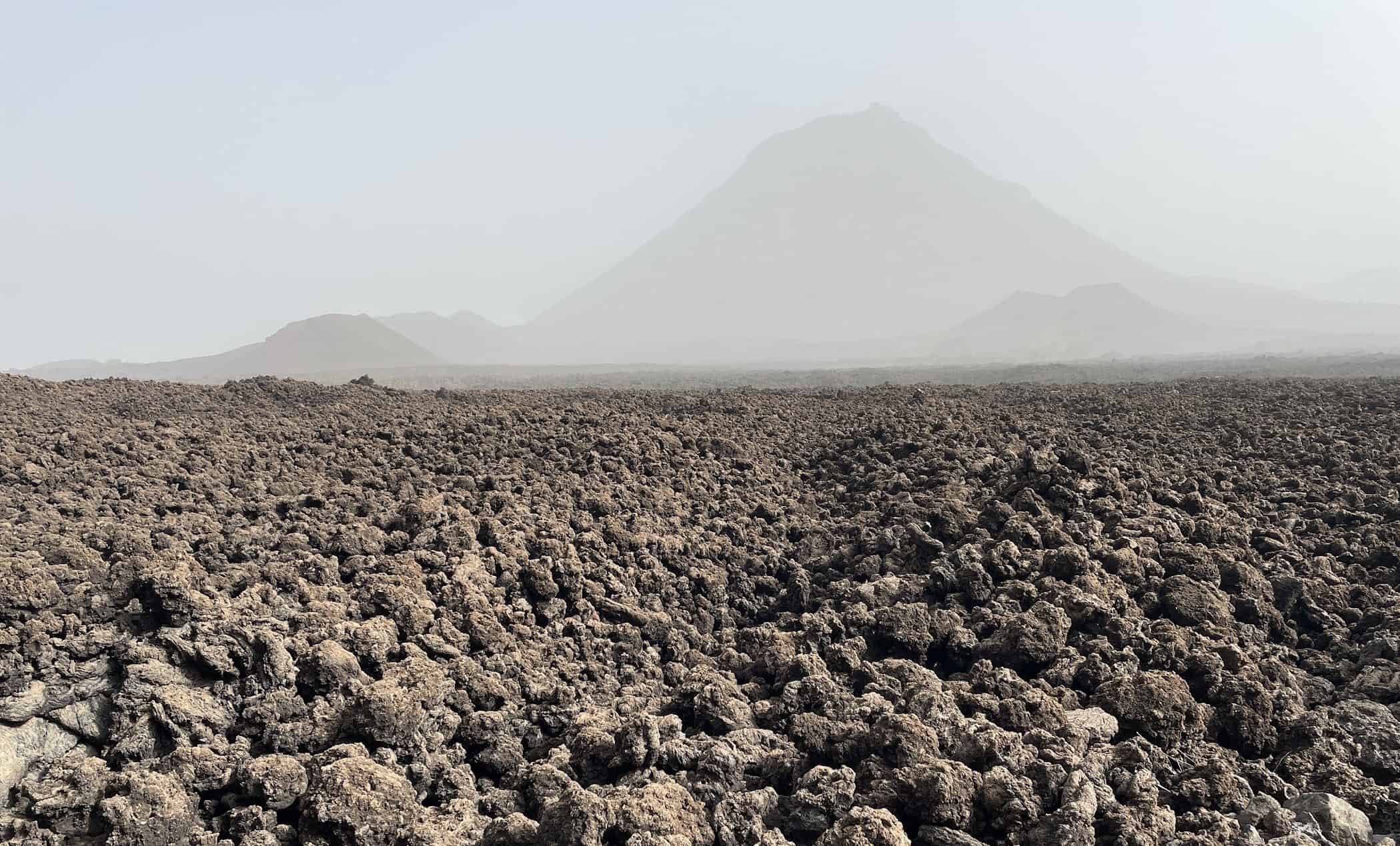
Our eyes are constantly and magnetically drawn to the central cone. We pause for countless photos even though we’re here for two full days. It’s impossible to stop taking photos, as the scene changes subtly, presents new viewpoints, then changes once again.
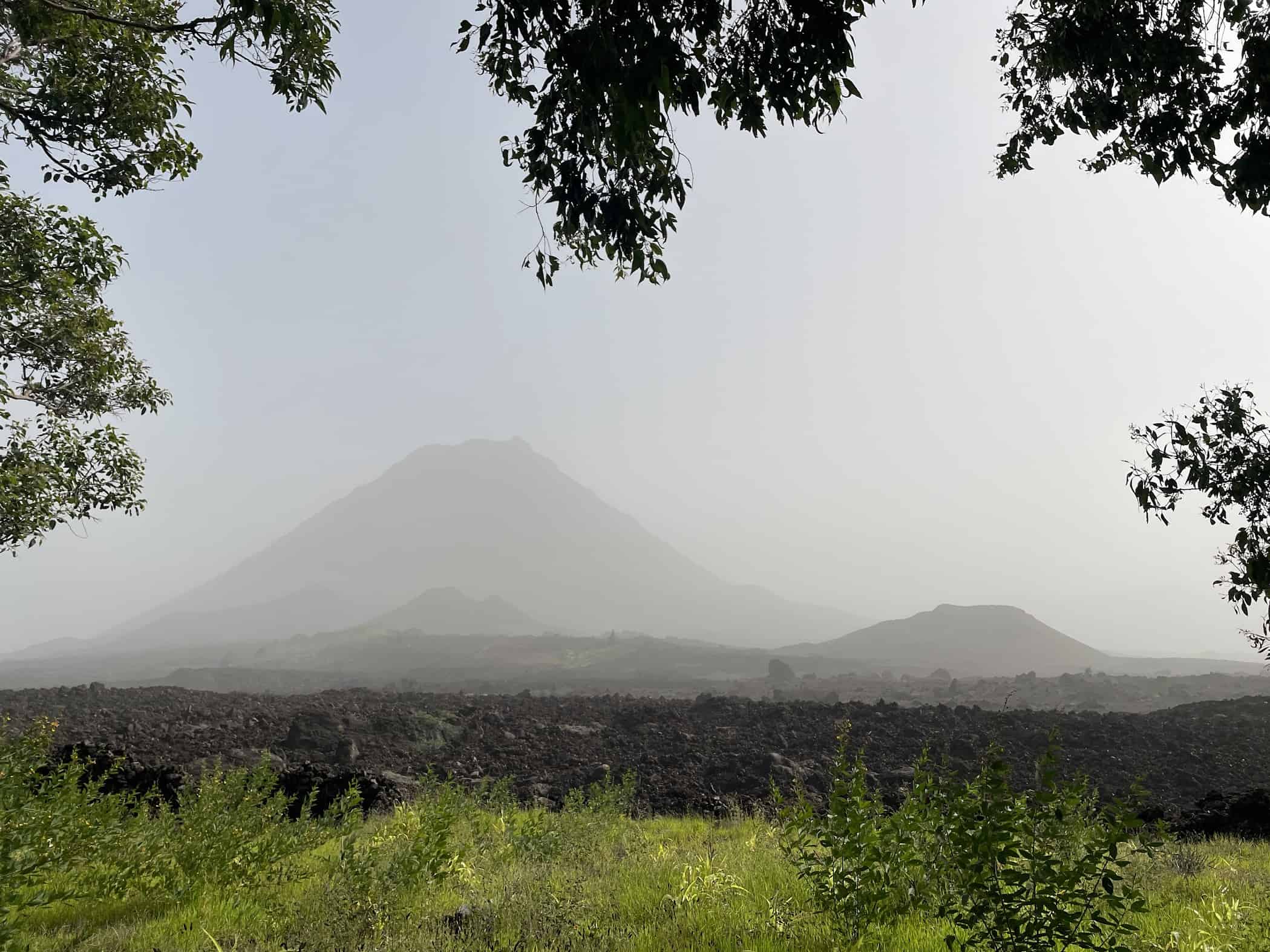
The road turns south and heads through the lava field.
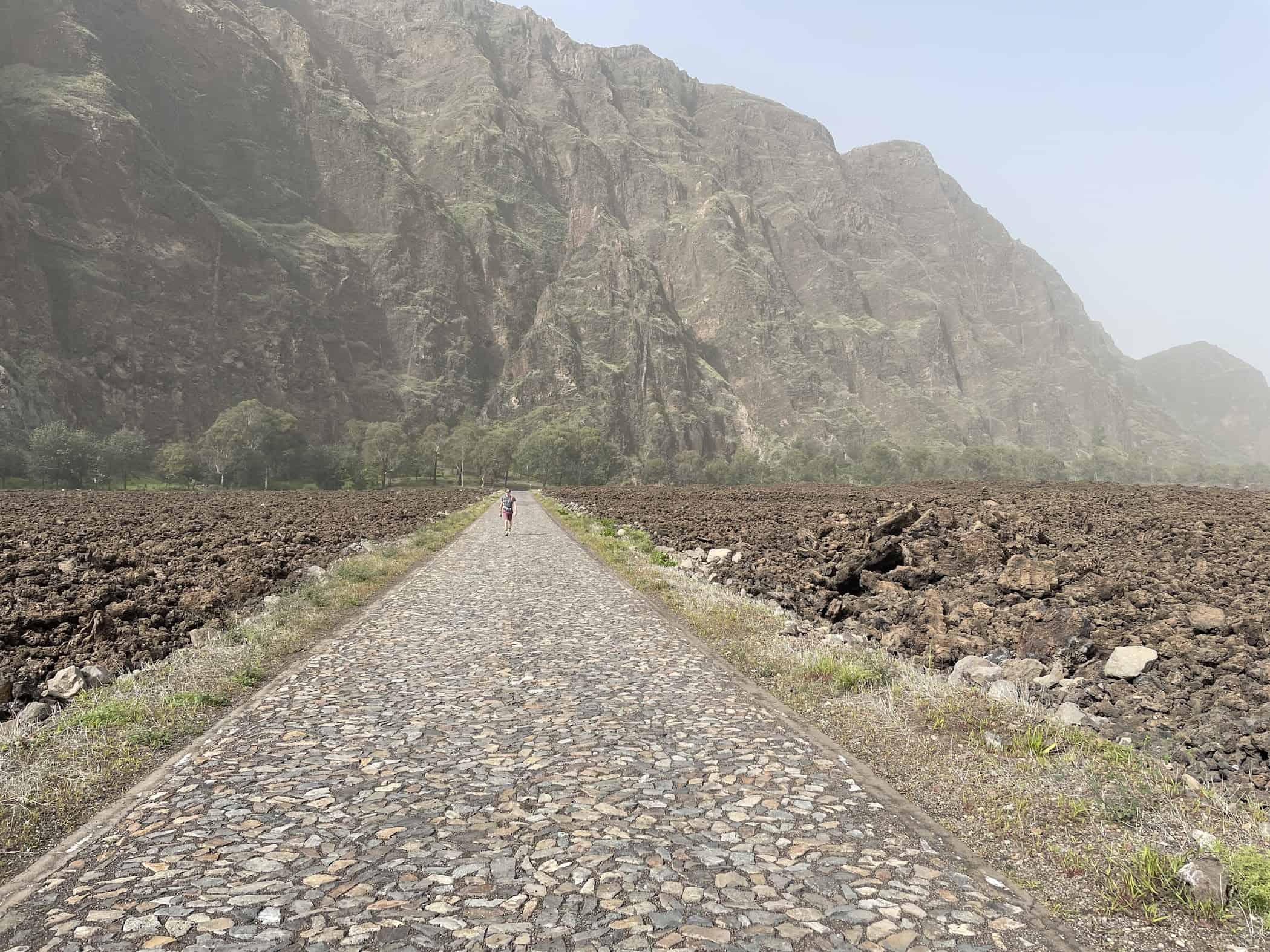
We approach Bangaeira village, destroyed by the eruption of 2014. Bangaeira and Portella are sited close together and – before the majority of buildings were destroyed in 2014 – had 1,200 inhabitants. Half have now settled elsewhere; half have returned to rebuild their homes and lives. Mauricio shows us the house that he’s building for his young family. Traditional homes up here are circular, resembling dark-coloured igloos and nowadays are made of blocks created from volcanic ash mixed with concrete. It’s amazing to see life being carved from destruction.
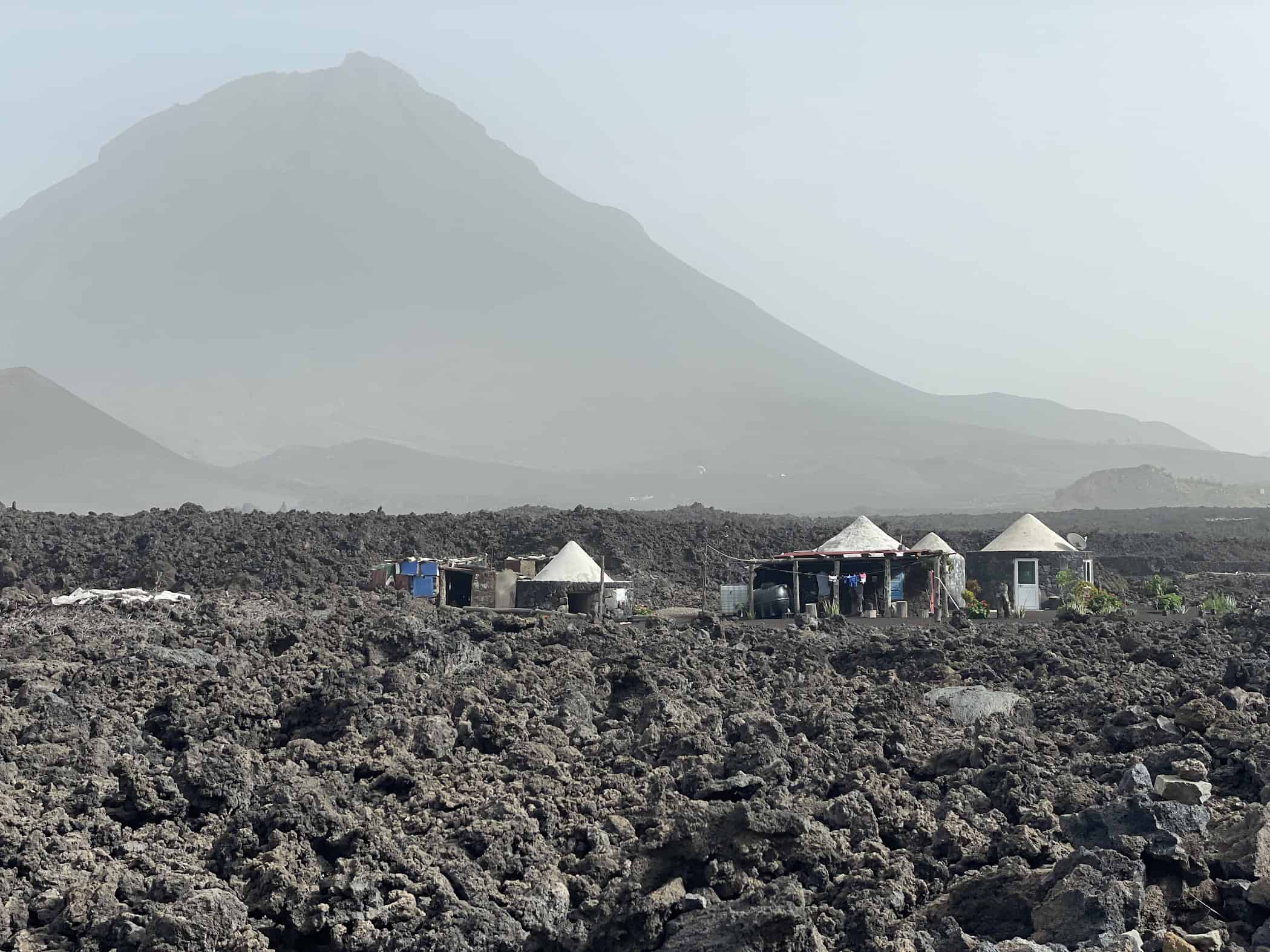
We walk up and pass through Portella village. Our destination for today is Casa Marisa II, a guesthouse whose new name reflects the changes that you need to accept in order to live here. As we enter, Mauricio shows us a hot area of ground – a small thermal vent, where steam from heated ground water reaches the surface. Mauricio explains that the area where Casa Marisa II has been constructed is upon the deepest area of the 2014 lava flow. The ground is not yet completely cool and in fact the temperature of the floors of the rooms of Casa Marisa is still changing over time.
Later that day we’re drinking beer and sat on top of the Casa Marisa roof, eyes still fixed on that summit cone that’s drawn us to this place. Tomorrow, we’ll be up there.”
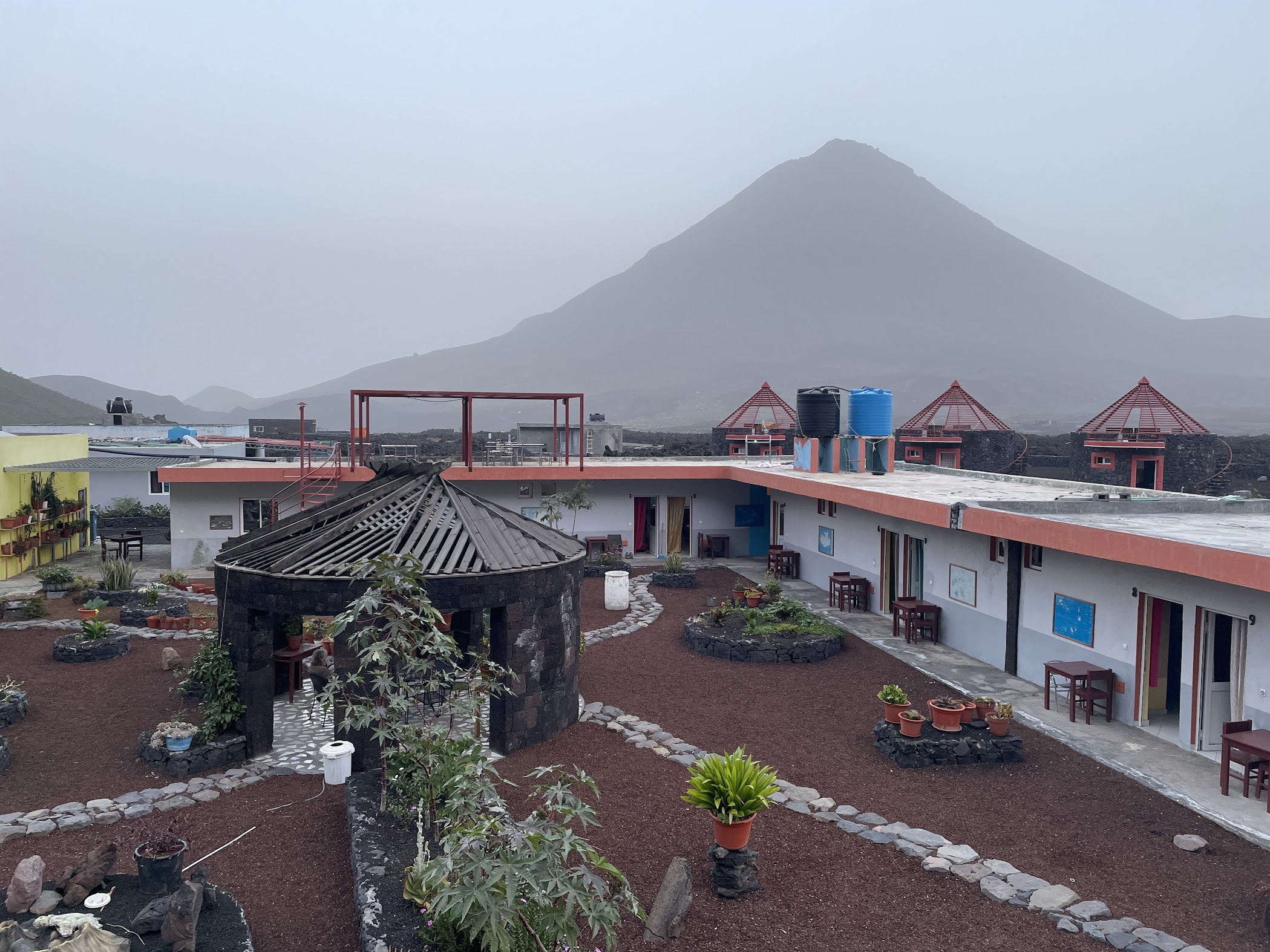
Cape Verde Choice tailor made holidays.
There is so much to explore on Cape Verde – the 9 islands each have their own flavour and they are surprisingly different. The coffee is also excellent!
Max and Jake are our specialists for Cape Verde – they would love to hear from you and can talk to you in detail about the delights of this beautiful archipelago.
Call us: on 01768 721030.
Or CLICK HERE to send us an enquiry.








Follow us online